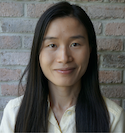.jpg)
Ashiatsu’s history
With its early beginning in the Eastern part of the world, Ashiatsu’s history spans several continents and has been widely used for more than 2,000 years.
There are many different schools of barefoot massage either in India, in Japan, in China and in many other Eastern countries.
For example, in India Ashiatsu is perceived as a deep relaxation massage. Some Indian practitioners are performing their treatment on a floor or on a mat, and most of them require balancing props such as ceiling bars, chairs, bamboo rods, poles and even chains and ropes like on the picture above.

In China, instead of being seen as a relaxation method, Ashiatsu is clearly considered to be an application of Chinese Traditional Clinical Medicine, which has been determined mostly by the history of its own development.
During the period of Spring and Autumn Warring States (BC 770——BC 221) in Chinese history, Ashiatsu began to be developed to cure people’s pain at the Emperor’s Court and later it began to be offered to the ordinary people.
Some typical Ashiatsu methods have been mentioned in the history of treatments by some of China’s major ancient medical books, like “Huang Di Nei Jing” and “Jin Kui Yao Lue”. During that period, Ashiatsu was mainly used to fulfill two purposes: pain killing and global health care.
During the Yuan Dynasty, after some long-term empirical experiences, Chinese doctors began to notice that Ashiatsu had its unique efficacy in back and lower back pain management, together with deep tissue and muscular trauma treatment.
In “Hui Hui Yao Fang”, which is another major Chinese Traditional Clinical Medicine book, there are stories talking about doctors curing some spine deformations by standing carefully on their patient’s backs and thus resetting the protruding bones. That particular modality became to be described as “Cai Qiao Fa” in Chinese, which means “Ashiatsu Treatment.”
Since then, more and more Chinese medicine experts began to explore the medical applications of Ashiatsu and they devised the specific footwork program that is now widely used in China and is based on the Acupuncture meridians and trigger points therapy.


